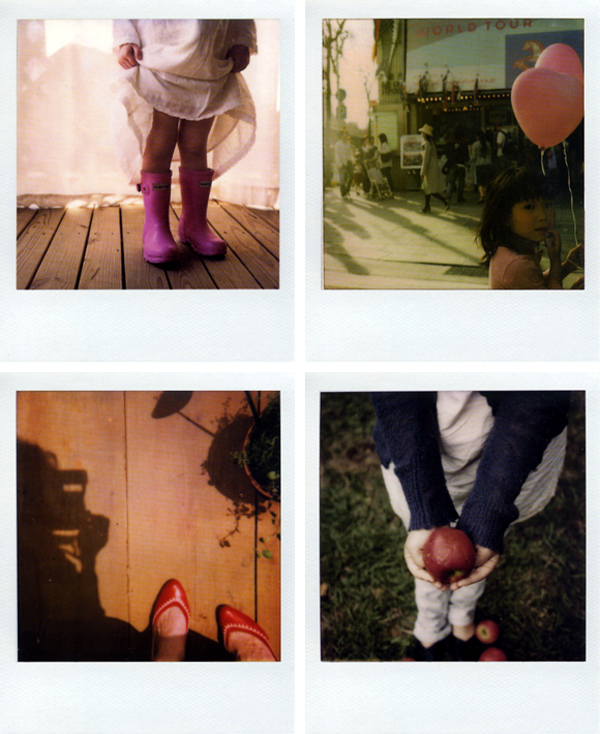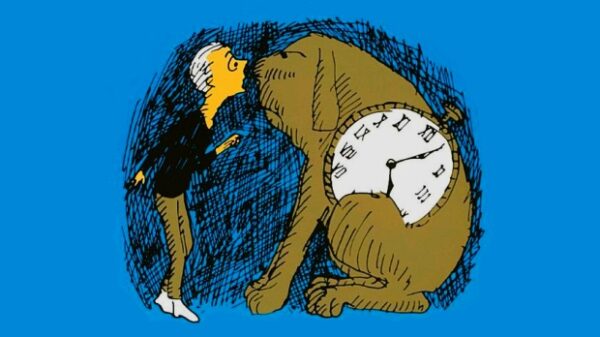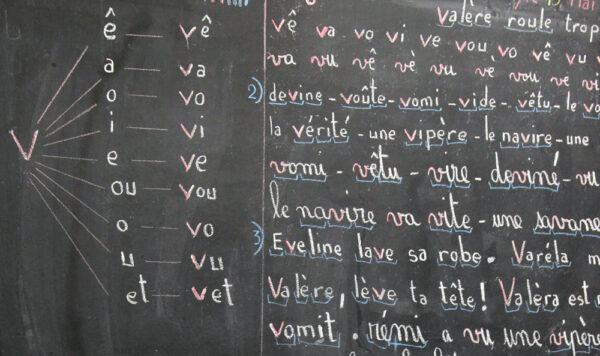Polaroid joy
 Where do I begin with describing the joy of Polaroids? There’s the magic of the technology, which unlike many high-tech innovations manages to be enchanting long past the point of newness. There’s the delight of instant gratification coupled with a delicious (almost torturous) anticipation. And then there’s the experience itself, the sheer pleasure of the image emerging, first a ghostly impression, then full color, out of a sort of muddy brown nothingness.
Where do I begin with describing the joy of Polaroids? There’s the magic of the technology, which unlike many high-tech innovations manages to be enchanting long past the point of newness. There’s the delight of instant gratification coupled with a delicious (almost torturous) anticipation. And then there’s the experience itself, the sheer pleasure of the image emerging, first a ghostly impression, then full color, out of a sort of muddy brown nothingness.
Digital cameras bring joy too, of course. Our first encounters with that technology were certainly magical, though its proliferation has made them less so. You can relive that initial joy and remind yourself how wondrous digital photography is by traveling to the most remote places with a digital camera. In 2006, my then-boyfriend and I were admiring a donkey in rural Kyrgyzstan when its owner came along and invited me to give it whirl. The man joined me in a photo and I’ll never forget how his eyes lit up at seeing the photo displayed on that tiny screen. We rarely have the opportunity to feel that way anymore, but digital photography still has its joys — they just come from other attributes. For example, the scale of digital technology is such that we can carry it with us everywhere, so we never miss a joyful moment. And because we can take zillions of shots for free, without even thinking about it, digital photography lends itself to more spontaneous, unexpected results.
But Polaroid has a few joyful features that the weensy camera in my iPhone can’t hope to match. First, the Polaroid is a real thing, an artifact. The Polaroid spits out a real picture (and does so with that exciting ejector noise). The picture is a real, tangible thing. It has weight and texture, smell and sheen. It interacts with light, reflecting it off its glossy surface. It interacts with the hands, showing fingerprints and odd effects if you touch the surface during the developing process. A digital photo feels ethereal; it’s an image, but not a picture. It engages just our vision, while a Polaroid engages all our senses. (Well, except taste. I hope.)
The Polaroid does the instant gratification of digital one better by incorporating a tiny interval, a delay that allows our anticipation to build. Studies have shown that interruptions or delays preceding a desired event make the event more pleasurable when it occurs. So while that wait for the image to come through tries our patience, it actually makes for a more joyful rush when the image actually appears.
The interval suggests another joyful feature of Polaroid, to me the most important one. Polaroid is not just a product, but a process. This is essential to the notion of joy. People don’t derive joy from products; they derive joy from experiences. A product is static. It can only create joy through its contribution to an experience — the experience of using it (hula hoop), wearing it (pair of shoes), doing something fun with it (golf clubs), interacting with others through it (phone), contemplating it (art), and so on. Objects that suggest or prescribe an experience are more likely to be joyful than others. But objects can also incorporate experience into their very essence, their matter, and this is transcendent. Polaroid is one of those rare products that embodies an experience. Every Polaroid picture is a unique show, a one-act play of light and color whose action unfolds silently in front of the user. That process reflects the experience you just had when you took the photo, when the moment crystallized in front of you as photo-worthy, when the players assumed just the right poses, when you depressed the shutter and made it permanent. The image emerges, a transformed vision of 3-5 minutes ago, as the most beautiful kind of déjà vu.
Which is all to say that I’m very pleased about the renaissance of the Polaroid that seems to be happening these days. Urban Outfitters is now selling Polaroid film, and I just founded these gorgeous Polaroid notecards (above) on the always charming Jars of Cute (available at Fred Flare). To me it’s less a manifestation of retro nostalgia than a craving for tangible, joyful experiences, something I think we all can use a little more of in our lives.




Leave a Comment